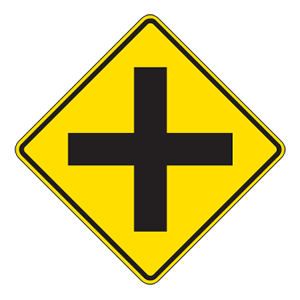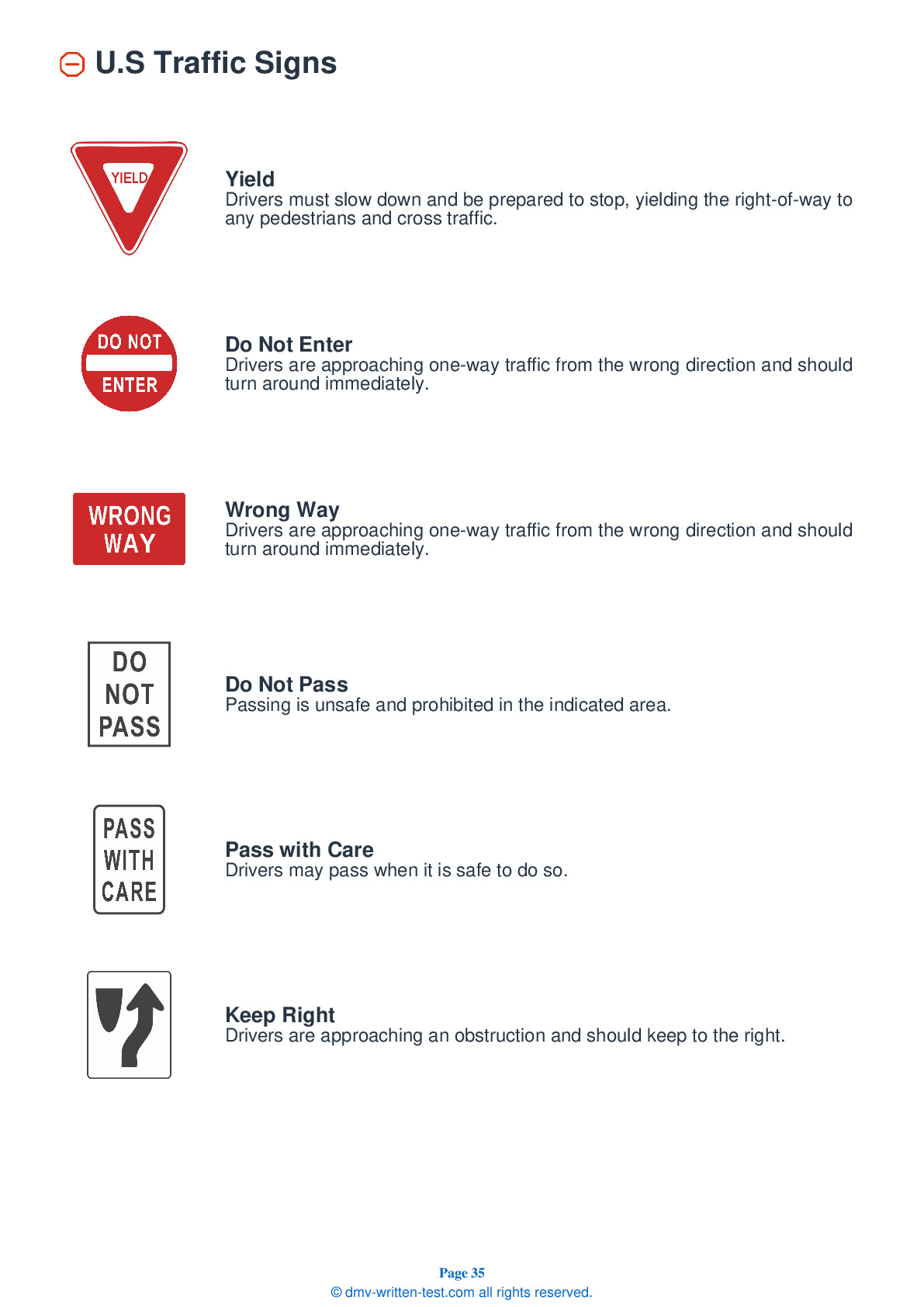2025 Utah Permit Test 17
The following questions are from real DMV written tests. These are some of the actual permit questions you will face in Utah. Each permit practice test question has three answer choices. Select one answer for each question and select "grade this section." You can find this button at the bottom of the drivers license quiz. For a complete list of questions and answers for Utah please visit https://cheat-sheets.dmv-written-test.com/en/utah/car.
Number of Tests
Number of Question
Passing Score
1. How can you lower the risk of hydroplaning?
Explanation
Hydroplaning happens when a vehicle glides on top of a thin layer of water between its tires and the road. Tires with low air pressure or bad tread can increase the risk of hydroplaning. Speeding also increases the risk.
2. This sign means:

Explanation
Warning signs prepare drivers for upcoming road conditions and hazards and are usually yellow with black markings. This sign alerts drivers to an upcoming intersection.
3. You are approaching a railroad crossing that has no visible gates or flashing lights, but has a standard crossbuck. You should:
Explanation
You must approach all railroad crossings with extreme caution and cross only when you know that no train is coming from either direction. If there is a flagger at a crossing, you must obey all of their instructions.
4. You have the right-of-way when turning left on which of the following traffic signals?
Explanation
A green steady arrow means you may pass through the intersection in the direction that the arrow is pointing. Oncoming traffic is required to stop for turning traffic.
5. How can you help prevent rear-end collisions?
Explanation
Stopping suddenly can make it difficult for drivers behind you to avoid a rear-end collision. When stopping, release the accelerator to allow your vehicle to slow. Press the brake pedal by applying steady pressure, activating your brake lights and causing the vehicle to stop smoothly.
6. When driving in traffic, it is safest to:
Explanation
Crashes often happen when some drivers go faster or slower than other vehicles on the road. Always try to drive with the flow of traffic, within the posted speed limit.
7. You should honk your horn when you:
Explanation
Your horn should be used as a warning in situations where you think another driver or a pedestrian does not see you. For example, if a child begins to run into the street in front of your vehicle, you should sound your horn.
8. Highways and roads freeze before ramps and bridges.
Explanation




